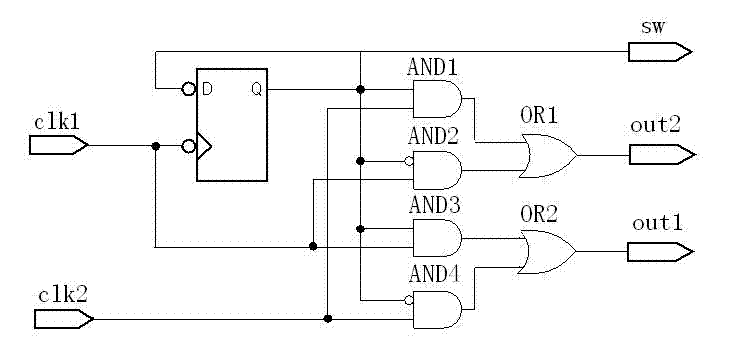A random time-to-digital converter
一种数字转换器、随机时间的技术,应用在时间数字转换器、应用随机技术转换、模/数转换等方向,能够解决功耗、面积和硬件消耗增大等问题,达到消除器件失配和工艺、面积减半的效果
- Summary
- Abstract
- Description
- Claims
- Application Information
AI Technical Summary
Problems solved by technology
Method used
Image
Examples
Embodiment Construction
[0022] Below in conjunction with accompanying drawing, technical scheme of the present invention is described in further detail:
[0023] Such as figure 1 As shown, the random time-to-digital converter includes three parts: input switching circuit, STDC array and encoder. The input switching circuit is realized by digital logic circuit. The STDC array is composed of 64 identical comparator units. The encoder is composed of sw Signal controlled 64-7 encoder. The two clock input signals clk1 and clk2 are connected to the input terminals of the input switching circuit, the outputs out1 and out2 of the input switching circuit are respectively connected to the input terminals of each comparator in the STDC array, and the output signal sw is connected to the encoder as a control signal, which is determined by A frequency-divided-by-two signal triggered by the falling edge of clk1. The 64-bit judgment result generated by STDC is connected to the encoder, and the encoder generates 7...
PUM
 Login to View More
Login to View More Abstract
Description
Claims
Application Information
 Login to View More
Login to View More - R&D
- Intellectual Property
- Life Sciences
- Materials
- Tech Scout
- Unparalleled Data Quality
- Higher Quality Content
- 60% Fewer Hallucinations
Browse by: Latest US Patents, China's latest patents, Technical Efficacy Thesaurus, Application Domain, Technology Topic, Popular Technical Reports.
© 2025 PatSnap. All rights reserved.Legal|Privacy policy|Modern Slavery Act Transparency Statement|Sitemap|About US| Contact US: help@patsnap.com



